Trupti Dave Wehner
Your education: Doctorate in Chemistry, career in industry
Describe your art in three words: Imaginary · Exploring · Colorful
Your discipline: Blend of art and science
Website
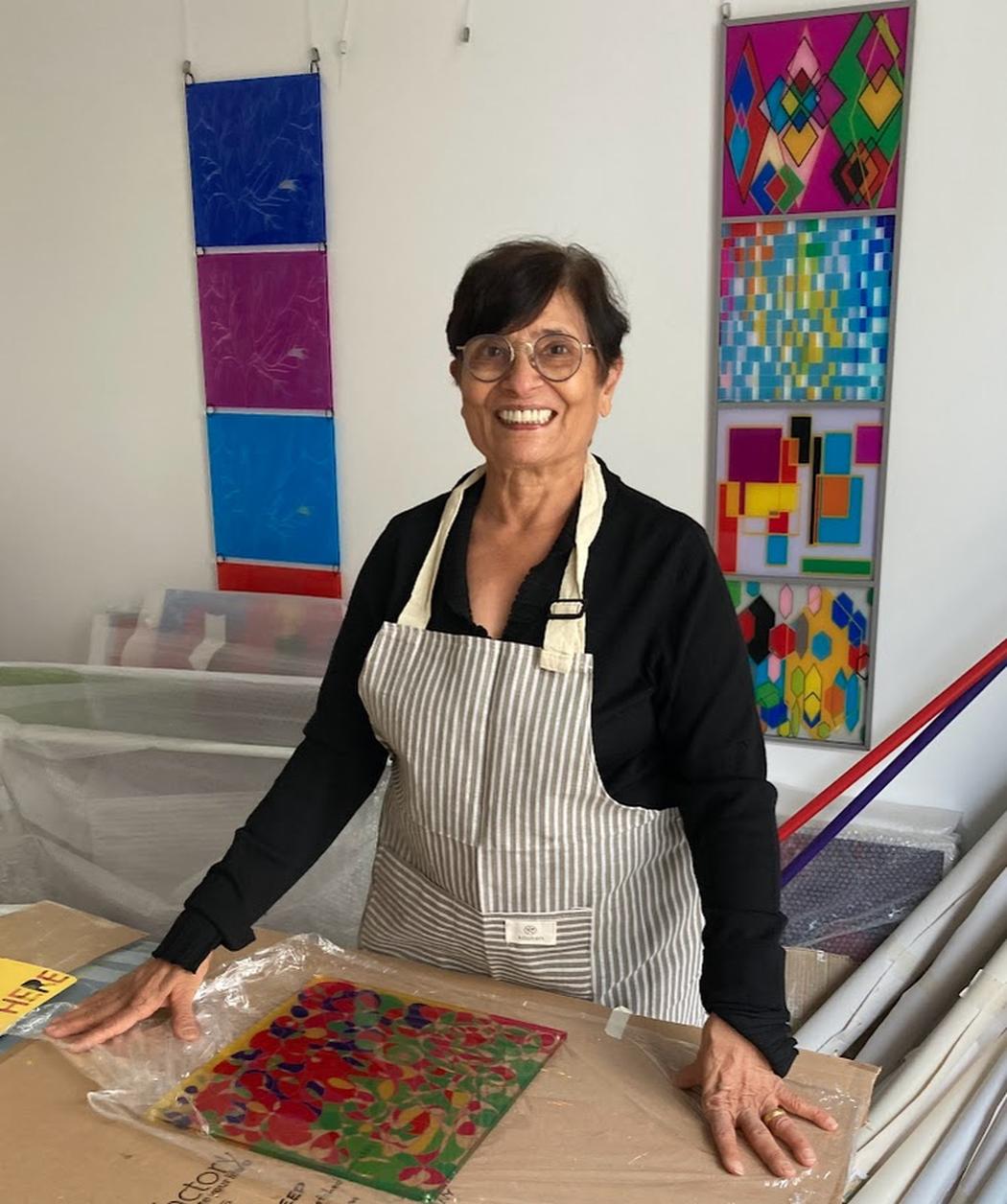
Your work bridges chemistry, physics, and art. How do you see the relationship between scientific discovery and artistic creation?
The most common thing between artists and scientists is that they always ask questions, no matter what. The distinction between them is a modern age phenomenon. Until the late sixteenth century the artists were also alchemists in search of the materials – pigments which they were using for their paintings or in search of formula to understand the world, the so called “Philosopher’s stone”.
You mentioned that your paintings come “from Galaxy into Gallery.” Could you tell us more about how cosmic origins inspire your creative process?
Yes. When I started spending my time intensively with painting many questions came to my mind. What is a color chemically and how it is made. A journey to find answers to these questions led me finally to the origin of life itself. We are literally and actually children of the stars. Every atom of calcium in every bone in our bodies, every atom of iron in our blood, was shot out of a star billions of years ago. The three cosmic stages through which the chemical elements were formed are:
- Soon after the big bang, nucleosynthesis formed the light elements: H-Hydrogen, He-Helium, and Li-Lithium.
- Stellar formation and evolution formed heavier elements from Be-Beryllium to Fe-Iron.
- Stellar explosion, or supernova, formed the elements heavier than Fe-Iron.
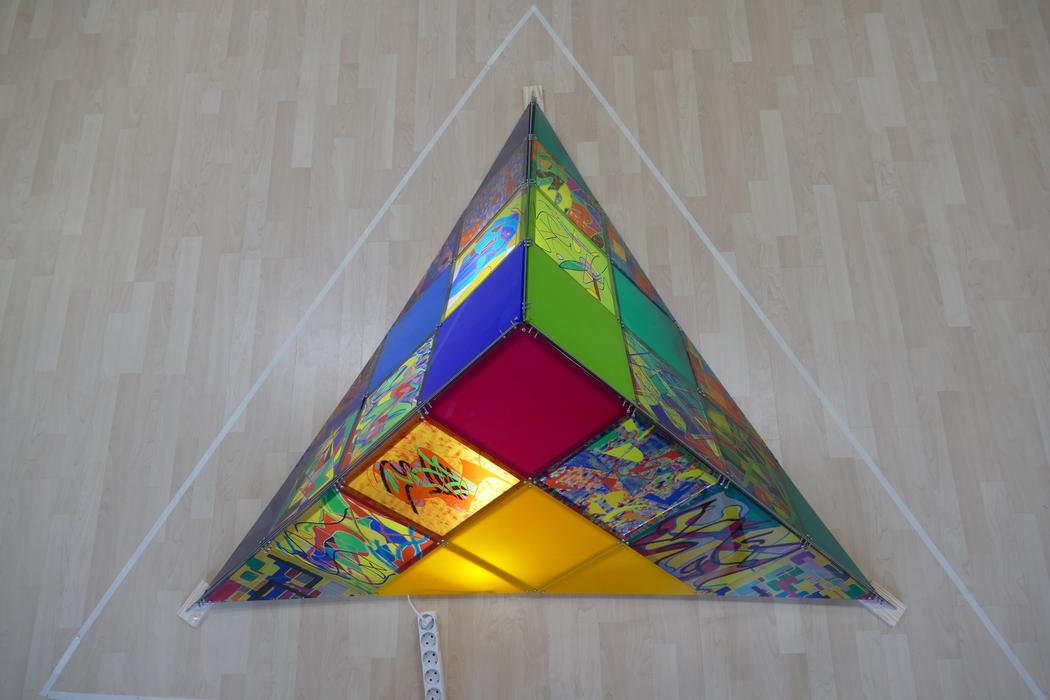 Trupti Dave Wehner | Pyramid
Trupti Dave Wehner | Pyramid
How do you choose the colors and materials you use — do you think about their chemical composition while painting?
Yes, I do.
Now a days, not only pigments but also many organic dyes are used. So, when I take blue color in my hand I think of Cobalt as metal and which chemical form of this metal is used to make this color, that I am taking out of the tube. Why Prussian Blue is different than Ultramarine Blue? Because they are chemically different materials. Blue is a very special pigment and plays a very crucial role in the art history. For example, naturally occurring Lapis lazuli was used as blue pigment and mainly used for sacral paintings because it was as precious as Gold. In 1824 a French chemist Jean-Baptiste Guimet developed a chemical process to synthesize ultramarine. After that an industrial production made it accessible to common use. So, chemistry played an important role in the development of art.
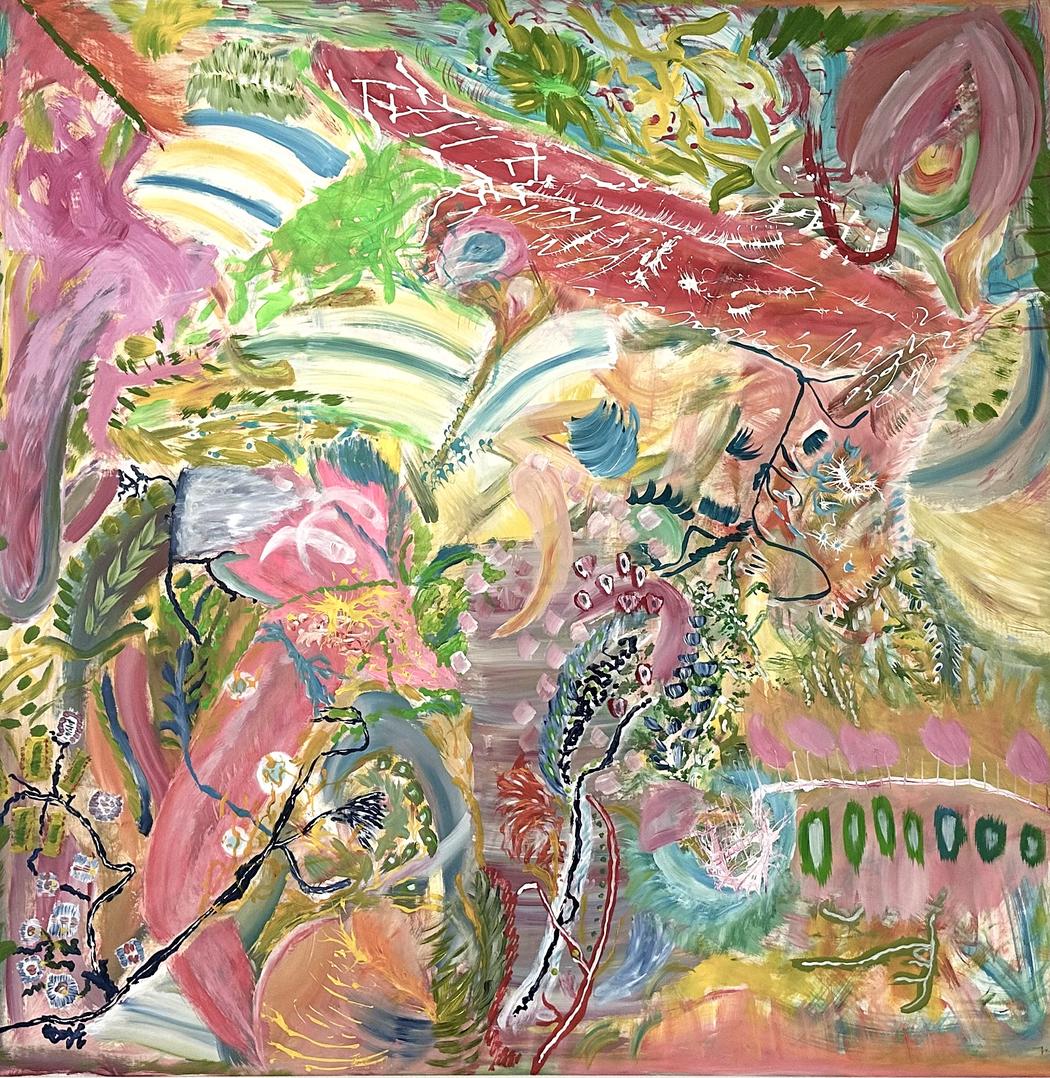 Trupti Dave Wehner | Premordial Soup | 2024
Trupti Dave Wehner | Premordial Soup | 2024
As someone who has worked in the chemical industry, what led you to transition from laboratory research to artistic experimentation?
In history, art and chemistry or alchemy were always two sides of a coin. Artists were inspired by alchemists and alchemists made art possible. Jan Stradanus (1525-1605), a Flemish artist who worked for the Medici paid homage to alchemists in his famous painting “Alchemist Laboratory” (now in Palazzo Vecchio, Florence).
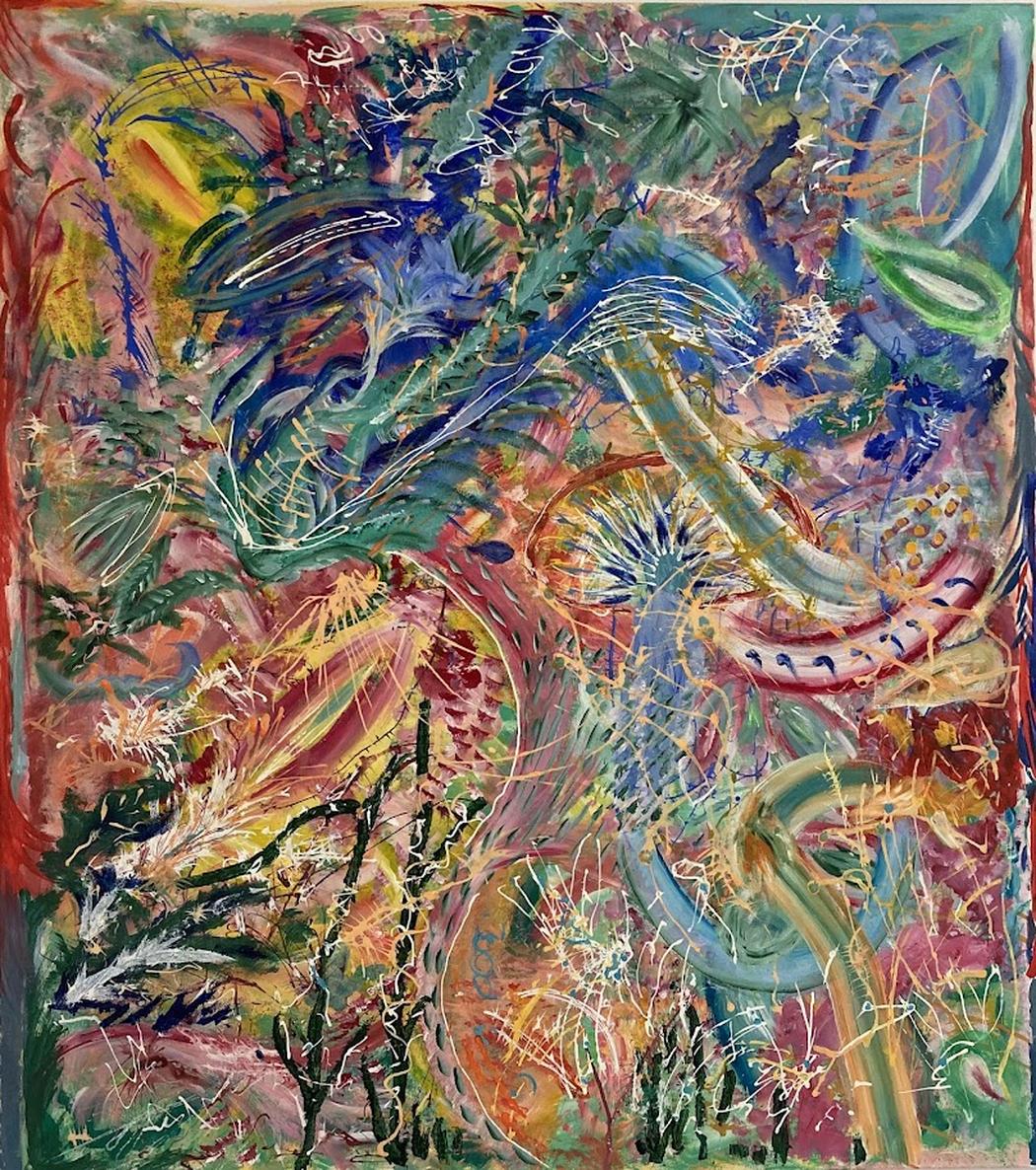 Trupti Dave Wehner | Prebiotic Synthesis | 2024
Trupti Dave Wehner | Prebiotic Synthesis | 2024
Many of your paintings seem to reflect the birth of matter or life. Do you consider them as visual metaphors for nucleosynthesis and evolution?
Yes, my paintings reflect different imaginary phases of a process of how life was formed on earth – from primordial soup to the formation of an eukaryotic cell. I try to imagine how a cosmic second in the cosmos would have looked like during a certain phase of evolution. I try to transform an imaginary forest of molecules into aesthetic visible forms.
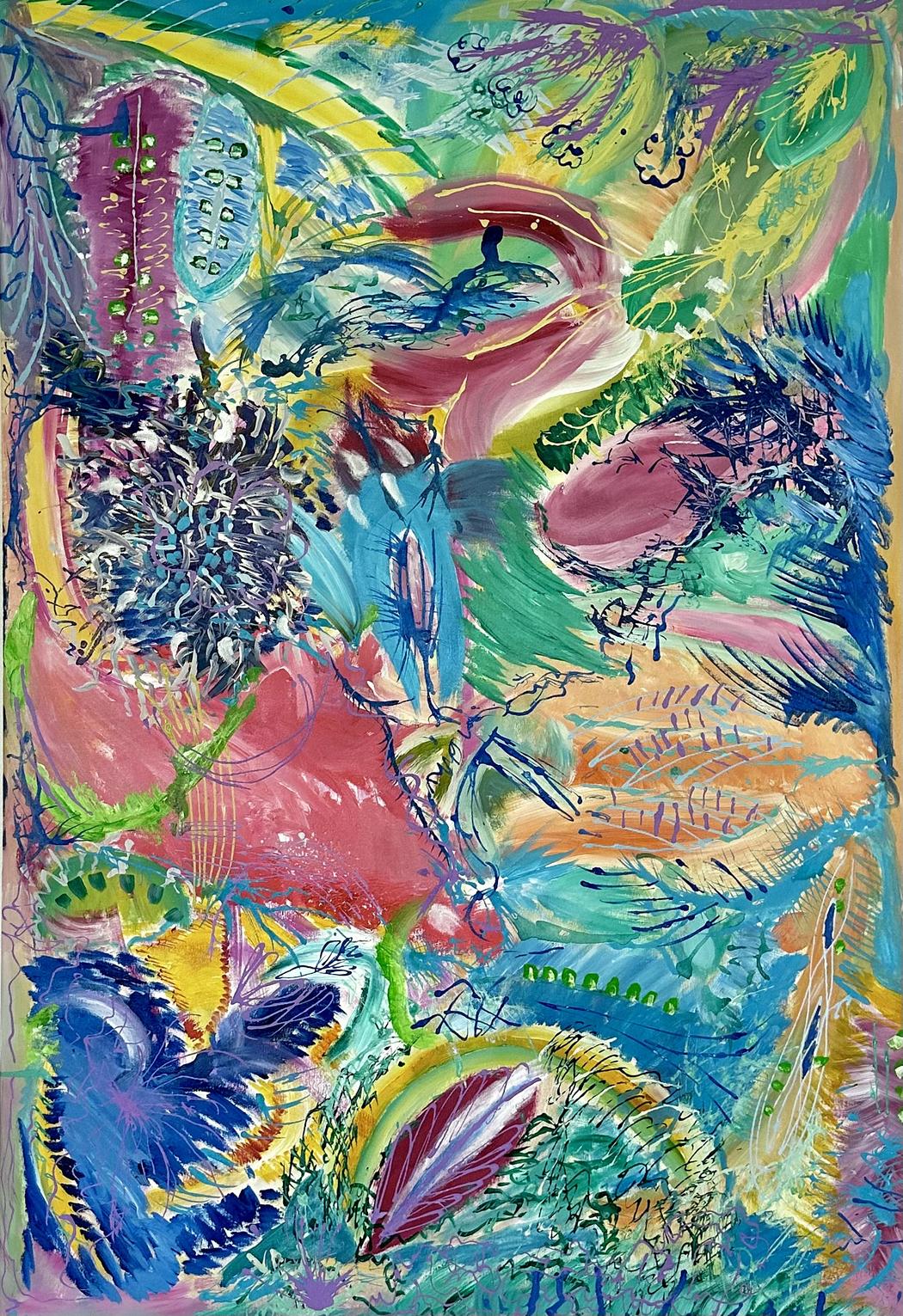 Trupti Dave Wehner | Biogenesis | 2024
Trupti Dave Wehner | Biogenesis | 2024
When combining digital and acrylic painting with polymeric materials, what kinds of textures or effects are you aiming to achieve?
My digital paintings are made on i-pad. These virtual paintings are made of just light. But when I print them on acrylic sheet, they become matter. The same phenomenon happened in the universe. Light became matter. One of my exhibitions of digital paintings and plastics was on “Light and Matter”. One object I made with such printed acrylic sheets is a trigonal pyramid.
Ammonia was the first molecule in the early earth atmosphere. It has a structure of a trigonal pyramid. Amino acids, the building blocks of human life were synthesized in the primordial soup from ammonia, methane and water.
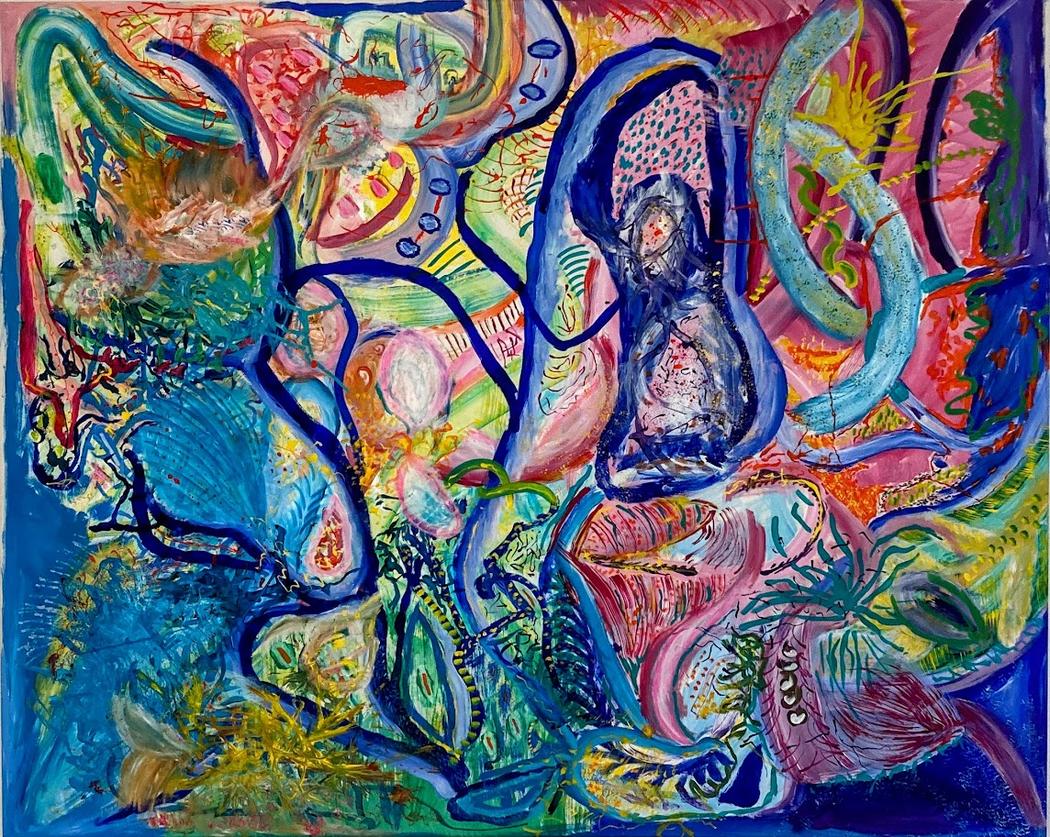 Trupti Dave Wehner | Archean Ocean | 2024
Trupti Dave Wehner | Archean Ocean | 2024
Do you think that your scientific background gives you a unique perspective on light, color, and energy in visual art?
Light carries information. Pigment or dye is the chemical substance that imparts color, while color is what the human eyes see. We see the light as wavelengths reflected or absorbed by that substance. Light transports energy.

Leave a Reply